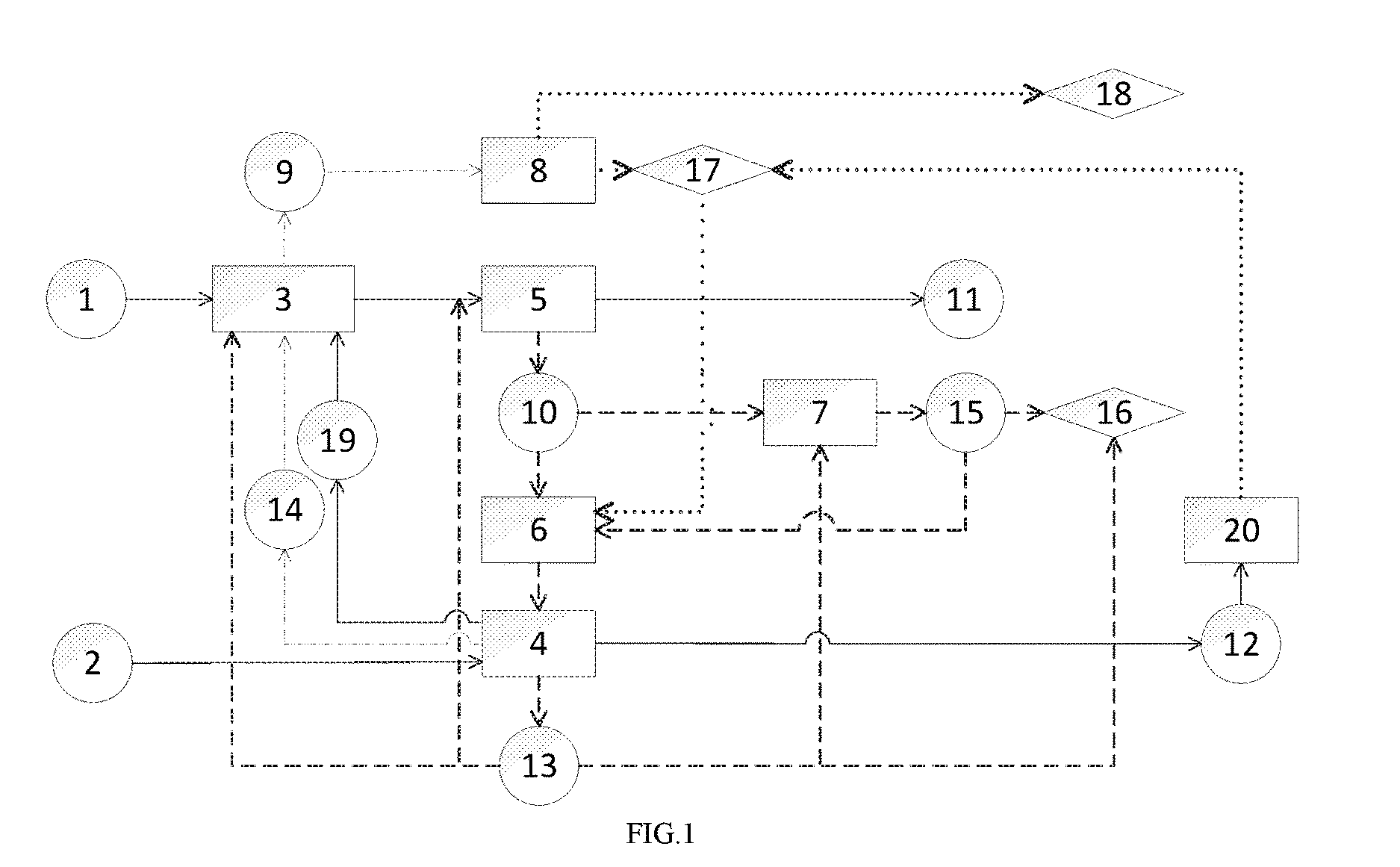Method and system of treating biomass wastes by biochemistry-thermochemistry multi-point interconnection
a biomass waste and biochemistry technology, applied in the field of comprehensive utilization of resources, can solve the problems of inability to recover, inability to achieve anaerobic degrading rate of recalcitrantly biodegradable wastes, and inability to meet the requirements of biochemical requirements, etc., to achieve the effect of improving the stability of the anaerobic process, accelerating the production of methane, and enhancing the enrichment growth
- Summary
- Abstract
- Description
- Claims
- Application Information
AI Technical Summary
Benefits of technology
Problems solved by technology
Method used
Image
Examples
embodiment
[0039]The method of treating biomass wastes by biochemistry-thermochemistry multi-point interconnection employs a process shown in FIG. 1, including the following steps: (1) converting dry biomass waste 2 into pyrolysis gas 14, biochar 13, pyrolysis oil 12 and aqueous condensate 19 by the pyrolyzing unit 4; (2) feeding the pyrolysis gas 14 and the aqueous condensate 19 into a pyrolysis digestion unit 3 for treating wet biomass waste 1; (3) feeding biochar 13 into the anaerobic digestion unit 3, after which the biochar is fed into the solid-liquid separation unit 5 with the digestion residues; (4) separating the digestion residues into slurry 11 and fiber digestate 10 by the solid-liquid separation unit 5, wherein biochar 13 can be further added before the solid-liquid separation unit 5; (5) conducting post-treatment on the fiber digestate 10 in the composting unit 7 to form a compost product 15, which can be used as soil amendment 16; biochar 13 can be further added in the compostin...
PUM
| Property | Measurement | Unit |
|---|---|---|
| temperature | aaaaa | aaaaa |
| solid-liquid separation efficiency | aaaaa | aaaaa |
| concentration | aaaaa | aaaaa |
Abstract
Description
Claims
Application Information
 Login to View More
Login to View More - R&D
- Intellectual Property
- Life Sciences
- Materials
- Tech Scout
- Unparalleled Data Quality
- Higher Quality Content
- 60% Fewer Hallucinations
Browse by: Latest US Patents, China's latest patents, Technical Efficacy Thesaurus, Application Domain, Technology Topic, Popular Technical Reports.
© 2025 PatSnap. All rights reserved.Legal|Privacy policy|Modern Slavery Act Transparency Statement|Sitemap|About US| Contact US: help@patsnap.com

